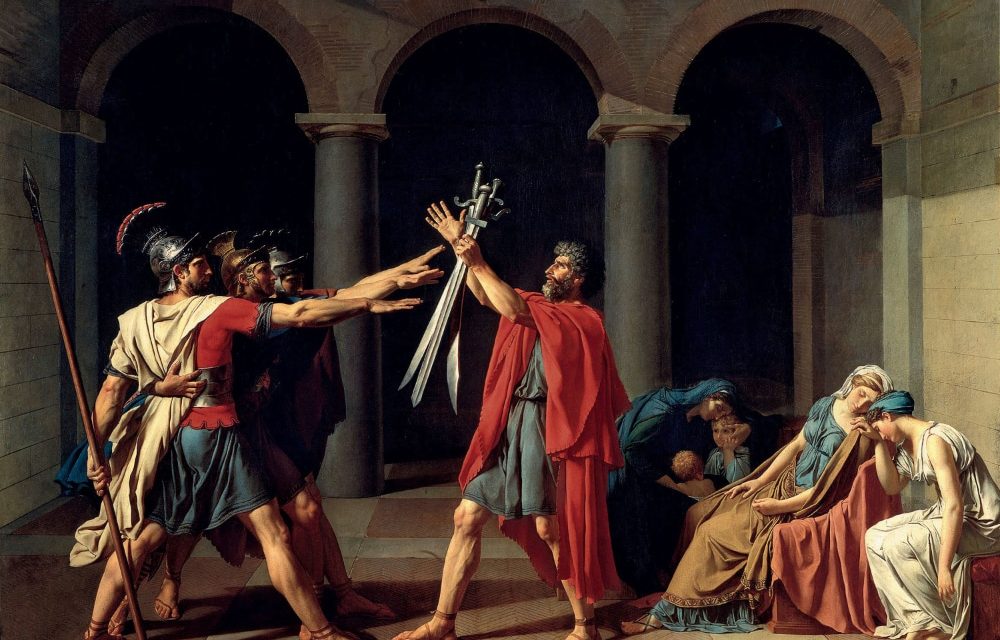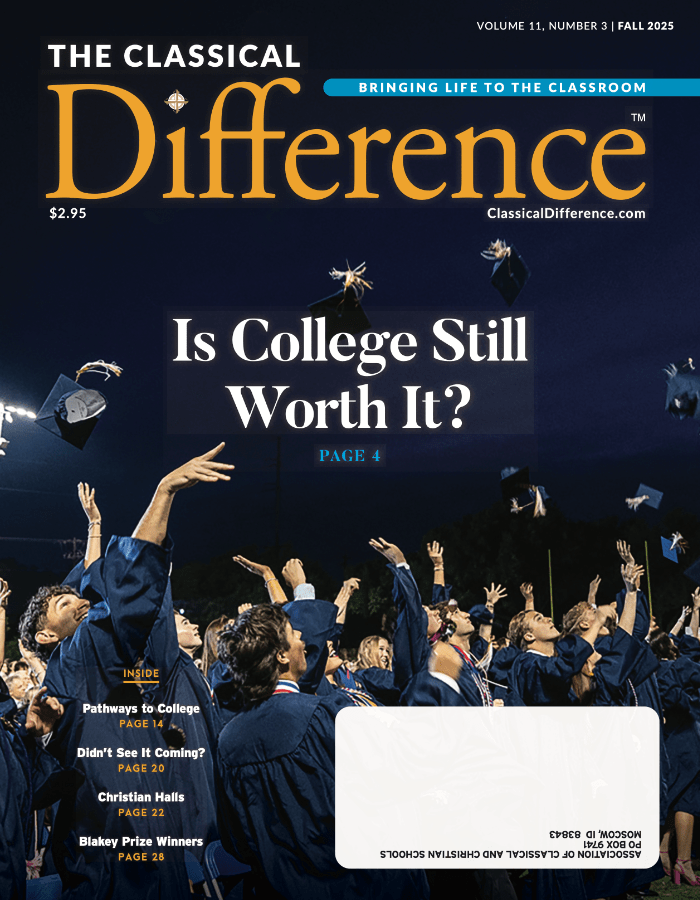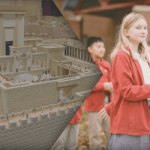The Death of Jacques-Louis David
By James Goode
When we think of great artists from the past, we usually don’t associate them with political movements. Our stereotype of the artist places him in a lonely studio, hunched over his work of genius, oblivious to the political storms that might be raging in the street below. But this misses something key about politics: someone always has to be telling the story. And prior to the invention of a camera, you needed an artist for that.
Frenchman Jacques-Louis David, born in 1748, was just such an artist. By the time he died two hundred years ago in 1825, he was one of the most well-known painters in Europe and a key figure in the development of Neoclassical style. He depicted classical scenes with realistic elegance, and you’ve probably seen a few of his works illustrating your textbooks. What you might not know is that he also used his art to fan the flames of the French Revolution and the subsequent rise of Napoleon Bonaparte.
David’s artistic training began under the tutelage of François Boucher, a leading artist of the Rococo style. But it was the artist Joseph-Marie Vien, an advocate of returning to classical ideals, who sparked David’s interest in the Greco-Roman world. This inclination was further reinforced when he won the Prix de Rome (a national art contest) in 1774, which allowed him to study at the French Academy in Rome. His time in Rome allowed him to escape the highly formal art schools of Paris and study classical works in Italy firsthand.
Upon returning to France six years later, David’s first major success was “The Oath of the Horatii,” a painting that depicted a scene from the Roman historian Livy. The painting epitomized his new style: dramatic use of light and shade, stark composition, and a focus on a moment of high moral drama. This great work established David as the leader of the Neoclassical movement in France, which emphasized virtue, heroism, and loyalty over the frivolity of the older, cluttered Rococo style.
The painting also highlighted one of his distinctive skills: the depiction of idealized but anatomically correct human forms, usually in a large scale (the original painting is almost 11 x 14 feet). Audiences were awestruck by these figures, which almost seemed to leap out of the frames. He continued this trend with other well-known classical subjects, such as “The Lictors Bring to Brutus the Bodies of His Sons” and the famous “Death of Socrates.”
David had grown increasingly dissatisfied with the system of training artists and actors under the heavy-handed French monarchy, which often dictated everything from subjects to styles. When the French Revolution began in 1789, he took a chance and strongly aligned himself with the radical Jacobins. As the revolt progressed, he actively participated in revolutionary politics, serving as a member of the feared Committee of Public Safety. He voted for the execution of the king, Louis XVI—his wife was so shocked she divorced him—and was close friends with leaders in the “Terror” such as Robespierre and Jean-Paul Marat. When the latter was assassinated, David immortalized him in his “Death of Marat” (1793), showcasing his skill in using art to produce an icon of revolutionary propaganda.
David and his fellow radicals eventually lost power, and though he was imprisoned several times, he escaped the guillotine. Eventually, he caught the eye of another rising leader: Napoleon Bonaparte. The military mind that could instantly see an enemy’s weakness quickly saw how the power of David’s art could be harnessed to enhance the general’s own image. He quickly commissioned works like “Napoleon Crossing the Alps” (1801-1805). In it, David deliberately linked Napoleon with other classical and medieval conquerors, like Hannibal and Charlemagne, who crossed those mountains into victory. The past was used to send a message in the present. After Napoleon declared himself Emperor, he made David his official court painter.
David’s later years were marked by permanent exile. After the final fall of Napoleon in 1815, he was forced to leave France for Belgium. In Brussels, he continued to paint but with less of the political fervor of his earlier work. Perhaps it was no longer safe—or perhaps he had learned hard lessons from his earlier activism.
David’s life ended in Brussels on December 29, 1825. His legacy includes not only the resurgence of Neoclassical ideals but also his influence upon political causes, making him a pivotal figure between the Enlightenment and the Romantic era. The next time you see one of his works, think not only about the Greek and Roman past he depicted—ponder how a painter could use these scenes to influence an entire nation.

James Goode
enjoys helping people discover all sorts of new things, but his first love will always remain the oddities of history. Currently he teaches at both Logos Online School and New Saint Andrews College in Moscow, ID. You can keep up with his social shenanigans by finding @Goodeguystuff on X/Twitter.










